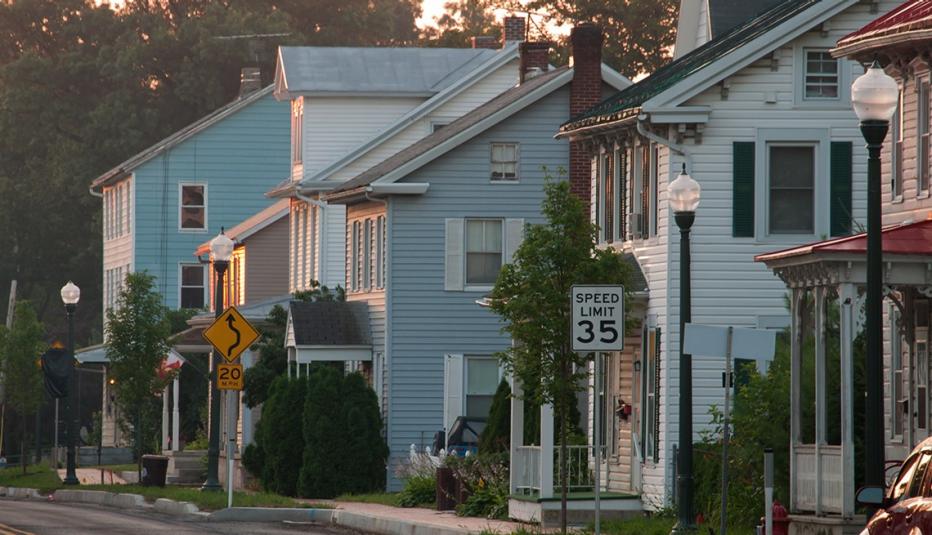AARP Hearing Center
Folks Just Want to Age in Place
There’s no place like home. A new AARP survey of adults shows that 3 out of 4 adults age 50 and older want to stay in their homes and communities as they age—yet many don’t see that happening for them.
While 76% of Americans age 50 and older say they prefer to remain in their current residence and 77% would like to live in their community as long as possible, just 59% anticipate they will be able to stay in their community, either in their current home (46%) or a different home still within their community (13%).


Age-in-Place Alternatives
Communities become a source of support and engagement for residents, particularly for older adults, who have an even stronger desire to age in place. The AARP survey finds many adults age 50 and older are willing to consider alternatives such as home sharing (32%), building an accessory dwelling unit (31%) and villages that provide services that enable aging in place (56%).
The survey uncovers some interesting nuances concerning the topic of home sharing that do not differ between younger and older adults. On the one hand, half of all adults age 18 and older say they would not consider home sharing (28%) or are unsure (23%) about it. Yet of that group, 3 in 5 (58%) say they would in fact consider the option if they needed help with everyday activities like household chores or transportation, and half (50%) would also consider it simply for companionship.
Most adults age 18 and older (63%) own their own homes, but about one-third expect their homes to need major modifications to accommodate aging needs. Rather than making such changes, about 24% of people age 50 and older say they plan to relocate to a new area altogether, according to AARP.
What Adults Want
On that topic, there’s the question of where to live. The survey asked respondents what they valued in a community when making those decisions. Considered extremely or very important to about 60% of Americans were the factors of affordable housing, transportation for people with special needs, and fair policies that provide equal opportunities. Equally critical were jobs and job training with flexibility for older adults and people with disabilities, AARP found.
When it comes to volunteering, about half of the survey respondents said transportation to volunteer activities and the opportunity to participate in decision making was vital. About 50% also said having easy access to local volunteer opportunities, activities and training was extremely or very important in a community.
With regard to outdoor spaces and buildings, well-maintained and convenient hospitals and other health care facilities as well as safe parks were features identified as the most important. Respondents also said well-maintained streets and easy to read traffic signs were also important in communities.
The likelihood of Americans staying in their current residence and never moving increases with age. However, AARP discovered that although the desire to stay in their community and residence remains high among adults age 50 and older, intensity has dropped since 2010.
Transportation is a big issue for older Americans, as their ability drive can change over time and become a safety issue. Nearly all adults age 50 and older (90%) drive themselves. The survey shows that older Americans also rely on walking, public transportation or someone else to drive.
Ride-share services, such as Uber and Lyft, can be an alternative, but although 94% of Americans age 50 and older have heard of ride-share options, just 29% have ever used it and 68% are not likely to in the next year. Most cite lack of need and concerns about privacy and safety as reasons for not using a ride-share service.
Similarly, most adults (88%) have heard of self-driving cars and are familiar with them but are not willing to ride in them. Younger people and those with a disability are more willing to ride in a driverless car, AARP discovered.
The survey results suggest a need to educate people about the benefits of ride-share services and other options to help them maintain their independence and stay engaged in community life.
Social Isolation Among the Generations
As for feeling connected, 3 in 10 adults report lacking companionship, feeling left out or feeling isolated from others, AARP finds. Experiences of social isolation are more prevalent among younger adults than the older ones surveyed. Most adults (94%) surveyed age 50 and older indicated they had someone they could call for help day or night if they were in trouble, but lower-income and some minority respondents were less likely to say they did.
Methodology
Data for this study was collected by NORC using its online AmeriSpeak Panel that is representative of the U.S. population. Surveyed online and by telephone in March and April of 2018, the total sample of 2,287 adults included a nationally representative sample of adults age 18+ (1,947), with multicultural oversamples of African American/Blacks (470 total), Hispanic/Latinos (439 total) and LGBT (409 total). A portion of the multicultural samples came from the national survey sample. The survey was conducted in English and Spanish.The Home and Community Preferences Survey provides data and insights that raise awareness of the importance of making our communities "great places for all ages" and serves as a tool for change in our communities. For more information, contact Joanne Binette at jbinette@aarp.org. For media inquiries, contact media@aarp.org.


































































